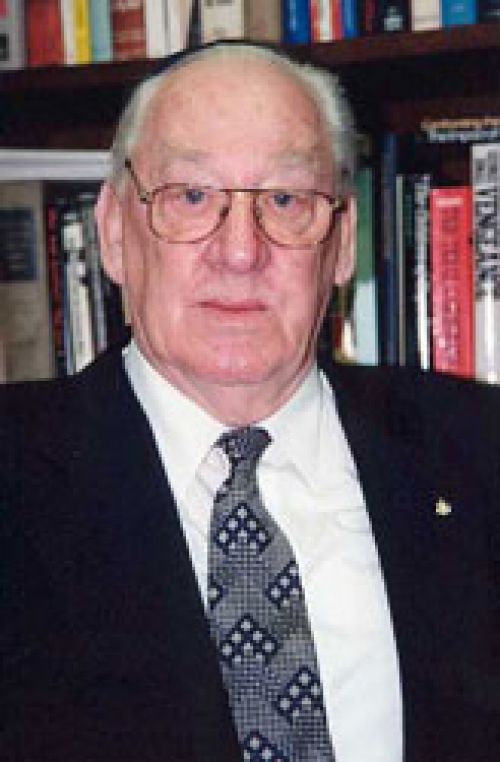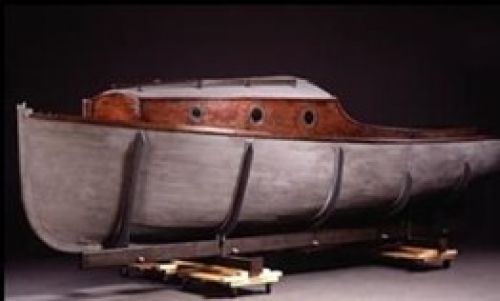Denmark - Preben Munch-Nielsen
The Germans invaded Denmark on April 9th 1940, in a combined attack against Norway, a few hours later the Danish Government accepted the German ultimatum and surrendered.

Preben Munch-Nielsen photographed in 1993
Preben Munch- Nielsen was born on June 13, 1926, in the fishing village of Snekkersten, Denmark. He was brought up by his grandmother who was also responsible for raising five other grandchildren. During his schooling he commuted daily to a school in the Danish capital of Copenhagen, approximately 25, miles south of Snekkersten.
Preben recalled his schooldays:
'There were very few Jews in my elementary school, but I did not think of them as Jews, we were all just Danes. In April 1940, I arrived in Copenhagen, where I saw planes overhead and German officers in the street. I joined the resistance as a courier, but I became more involved in October 1943, when the Gestapo began hunting down Danish Jews'.
Earlier, in the spring of 1943, inspired by the Allies progress in the war against the Nazis, the Danish people stepped up their resistance to the German occupation. Labour strikes and acts of sabotage intensified. On August 28, 1943, the German Military Commander General von Hannecken declared a state of emergency and commanded the Danish Government to institute martial law. Acts of sabotage were to be punishable by death, the press was to be censored and demonstrations were to be banned. The Danish Government refused to accept these measures and resigned.
Reich plenipotentiary for Denmark, Karl Werner Best, who had formerly been chief legal advisor in the Gestapo and General von Hannecken, were seized with fear regarding the adverse publicity that Himmler's deportation order against the Danish Jews would ensue. On September 18, Rolf Gunther arrived in Copenhagen, with a special commando of members of Adolf Eichmann's office. The commander of the Security Police Rudolf Mildner, flew to Berlin to request that Ernst Kaltenbrunner to withdraw the Eichmann commando, but his request was denied.
Himmler had ordered Karl Werner Best to carry out the deportations to commence on October 2, 1943. However, Georg Ferdinand Duckwitz, a German official stationed in Denmark leaked the news of the pending deportations to Danish leaders, who in turn informed the Jewish community leaders. The people of Denmark, aided by members of the resistance, church leaders, students, policemen, physicians, ordinary citizens, spontaneously came together to thwart the arrest and deportation of the Danish Jews.
Preben Munch-Nielsen, a high school student, was among those who participated in the rescue activities, despite the real possibility of facing the death penalty. He recalled his first mission:
'A policeman came to his house and asked him to pick up several Jews at a nearby train station and escort them through the woods to the shore. They would be smuggled by boat across the Sound to neutral Sweden.'
Preben completed the mission and joined the 'Friends of the Sound,' a group of Danes based in Snekkersten that co-ordinated the secret crossings to Sweden. The Swedish Government encouraged its citizens to welcome and harbour Jews. The 'Friends of the Sound' used the Snekkersten Inn as their headquarters. Many Jews hid in the Inn, or in nearby homes.
Preben Munch-Nielsen, recalled the process for hiding Jews prior to transporting them to Sweden:
'We hid them in houses near the shore and brought them to waiting boats at an appointed time. Under cover of darkness, we took up to twelve Jews at a time across the straits to Sweden. The four mile trip would take about fifty minutes.

The boat named Sunshine Preben Munch-Nielsen piloted from Denmark to Sweden in 1943
In a later interview with the USHMM, Preben spoke about the boat he used:
'We got this boat. It was bought by the bookbinder Kerr. It was a boat laying in the harbour of Elsinore and that was a very good boat, built in the beginning of the 1930's. It was of course a wooden boat with a good engine, and it was able to go rather quick, about eight or nine miles, and that is much for a motorboat. And when it started, Kerr, the first night I remember had two or three, no two trips to Sweden and I think we got ten to twelve passengers every time. And then later on we had in October seven hundred Jews and totally I know that this boat brought one thousand four hundred people from Denmark to Sweden'.
In Sweden Preben Munch-Nielsen joined the Danish voluntary forces in Sweden- Den Danske Brigade, and he only returned to Denmark in May 1945, when Denmark was liberated from Nazi rule. After returning to Denmark Preben began working in the import-export business. Only at the age of 59, did he consider a role of a public speaker and educator. After sharing his story with some Jews who were visiting Denmark, he was encouraged by friends to continue to share his personal experiences about the rescue of the Danish Jews during 1943.
All told, Preben Munch-Nielsen helped transport 1,400, Jewish refugees to Sweden and was honoured for his wartime heroics by the Garden of the Righteous Program in Washington DC, with a plaque. He was also honoured for his rescue efforts by the then American President Bill Clinton in 1997.
The small boat piloted by Preben Munch-Nielsen was located and donated to the USHMM in Washington DC, as a permanent exhibit. Mr and Mrs Munch-Nielsen returned in subsequent years to honour other people who aided the Jews as well. Preben Munch- Nielsen passed away during October 2002.
Sources
Jewish Foundation For The Righteous
US Congressional Record: A Tribute to Preben Munch-Nielsen by Tom Lantos of California in the House of Representatives - April 4, 2001
G.Reitlinger, The Final Solution Vallentine Mitchell and Co London 1953
USHMM
Thanks to John Ulrich Poulsen
www. holocaustresearchproject.org - online resource
© Holocaust Historical Society, December 8, 2023

